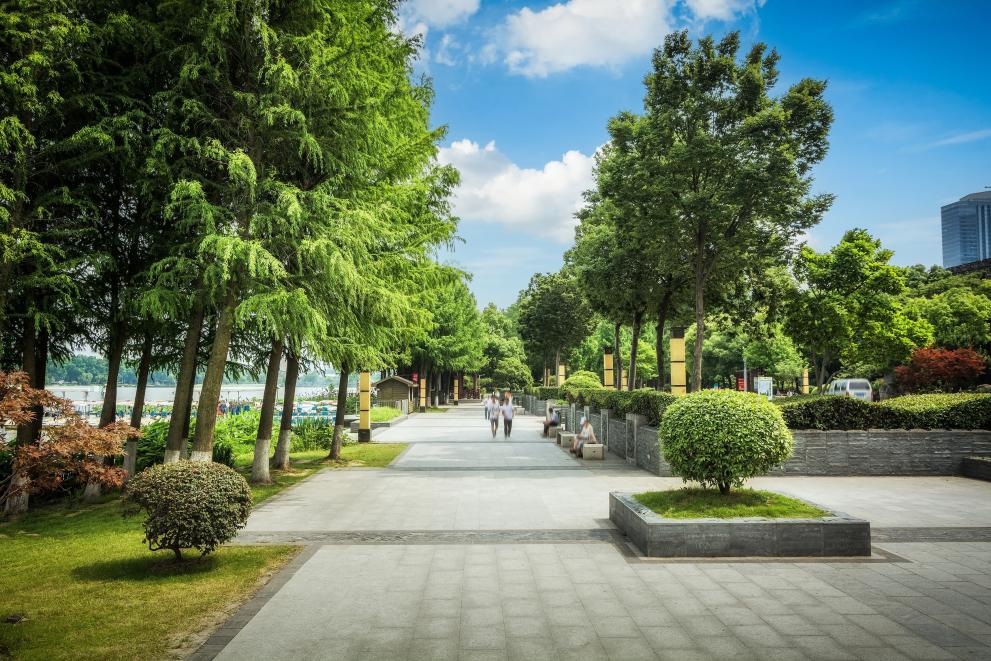
Planting trees in urban areas is a popular strategy (both in Europe and worldwide) for reducing temperatures in cities under global warming. However, the specific conditions which determine the relative effectiveness of this strategy across contexts is not fully understood. This study aimed to use big data to reveal some of the main factors that could inform decisions about urban tree planting programmes.
The researchers used satellite data on tree cover and land temperature from the NASA Landsat programme to model the ‘tree cooling efficiency’ (TCE) of 806 cities around the world between 2000 and 2015. TCE is defined as the reduction in temperature that is achieved by increasing tree cover by 1%, measured in degrees Celsius per percent (°C/%). Using meteorological data from the European Centre for Medium-Range Weather Forecasts, the researchers ran a machine learning model to determine the relative importance of potential key factors in determining TCE. They also considered the changes in various factors and their relationship to TCE across different global regions over the period.
The researchers say that the most important factor found to affect TCE was the leaf area index – a measure of the density of the leaves in the tree canopy. Where this index was higher – indicating a great surface area of leaves for a given area of tree cover – the cooling efficiency was greater. The second most important factor, according to the researchers, was the ‘reflection coefficient’ or ‘albedo’ of the city. Where city albedo was low – with dark materials such as asphalt absorbing a lot of heat from the sun – TCE was higher, as additional trees shade the dark surfaces and limit the amount of heat they absorb.
The researchers report that TCE increased globally by 45% over the study period, from an average of 0.2 °C/% in 2000 to 0.29 °C/% in 2015, indicating that the effectiveness of tree planting as a way of reducing city temperatures is rising. However, they say that there was a notable difference in the degree of increase between global regions. Cities in west-central Europe, together with those in the northeast United States and Japan, experienced greater increase in TCE over the period, according to the researchers. This is likely correlated with a combined result of the increase in leaf area index, decrease of city albedo, and decrease of relative humidity (in urban environments) that contributes plants to releasing more water vapour, which is one of the main mechanisms by which urban trees cool the areas around them. Meanwhile, cities in southern Europe, as well as in South America and Africa, experienced substantially lower increases in TCE, which coincided with lower TCE in general and less pronounced increases in tree cover and leaf area index.
The researchers note that in dry soil conditions, trees release less water vapour through their leaves. They highlight the importance of tree maintenance (to increase the leaf area index) and irrigation (to support the generation of water vapour) in maximising the cooling benefits of urban trees.
The researchers also say that TCE decreases with increasing tree cover – so that planting trees in an urban area that has very few trees already produces a greater benefit than planting in an area with lots of trees. They suggest that planting programmes in cities with significant tree cover should therefore focus on those areas of the city with the lowest existing cover.
Further Information
The researchers based their results on all woody vegetation greater than five metres in height, but did not include any recommendations regarding tree height. The satellite-based tree cover and surface temperature data does not distinguish tree species.
Source:
Zhao, J., Zhao, X., Wu, D., Meili, N., and Fatichi, S. (2023) Satellite-based evidence highlights a considerable increase of urban tree cooling benefits from 2000 to 2015. Global Change Biology 11: 3085–3097.
To cite this article/service:
“Science for Environment Policy”: European Commission DG Environment News Alert Service, edited by the Science Communication Unit, The University of the West of England, Bristol.
Notes on content:
The contents and views included in Science for Environment Policy are based on independent, peer reviewed research and do not necessarily reflect the position of the European Commission. Please note that this article is a summary of only one study. Other studies may come to other conclusions.
Details
- Publication date
- 27 July 2023
- Author
- Directorate-General for Environment

